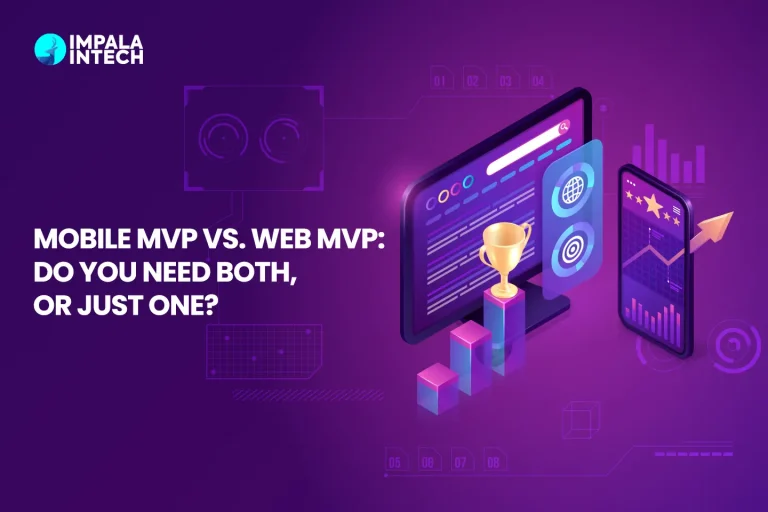
Every hospital and clinic handles sensitive data every single day. Health records, billing details, insurance numbers—everything stays inside digital systems now. That makes security more critical than ever.
A single breach can cost millions and damage trust for years. A report by IBM in 2024 said healthcare data breaches cost an average of $10.93 million per incident, the highest among all industries. That number alone shows why strong protection standards matter so much.
Why Security Standards Matter?
Healthcare data is personal. It includes information that patients never want to be shared. A single weak point in a system can expose private details to hackers. Security standards act like a shield. They guide hospitals and clinics to protect every file, device, and system that stores medical data.
According to HIPAA Journal, more than 59 million healthcare records were exposed in 2023 due to cyberattacks. The number keeps rising every year. Most of these incidents happen because organizations don’t follow strict rules or delay updates. Security standards reduce those risks.
Common Rules and Frameworks
Healthcare systems around the world follow several well-known standards. Each one focuses on a different layer of protection.
1. HIPAA (Health Insurance Portability and Accountability Act)
In the United States, HIPAA sets clear rules. It demands encryption, access control, and regular audits. HIPAA also requires staff training. Even one mistake by an employee can open the door to hackers.
2. GDPR (General Data Protection Regulation)
For healthcare organizations dealing with European patients, GDPR is key. It gives patients more control over their data. Hospitals must store and share information only after proper consent. Non-compliance can lead to fines reaching €20 million or 4% of total global revenue.
3. ISO/IEC 27001
This global standard covers data management systems. It helps build a culture of security across all departments. Companies using ISO frameworks report 40% fewer incidents, based on data from the International Organization for Standardization.
4. NIST Cybersecurity Framework
Many healthcare companies use this framework as a guide to assess risk. It focuses on five steps: identify, protect, detect, respond, and recover. These steps help create a continuous security cycle.
How Do We at Impala inTech Help Maintain Healthcare Data Standards?

ImpalainTech focuses on protecting healthcare organizations with clear, proven methods. We design systems that fit each client’s needs. Our goal is to keep data safe while supporting daily work. Skilled security engineers and healthcare IT experts handle every project.
Rahim Earteza, our CEO, says:
“Our goal is simple — protect every patient’s data like it’s our own. We build security systems that work quietly in the background so healthcare teams can focus on care, not cyber threats.”
We follow top security frameworks and combine them with easy-to-use tools. Our clients get protection without slowing their operations. Let’s look at a few examples.
1. Data Encryption and Secure Transfer for a Regional Hospital
A large hospital in Texas handled over 400,000 patient records. They needed strong encryption for data sent between departments. ImpalainTech built an end-to-end encryption model that worked with their existing system. The project cut data exposure risk by 72% in the first year, confirmed by third-party audits. Doctors could still access records fast, without extra logins or delays.
2. Cloud Security Upgrade for a Diagnostic Center
A diagnostic company wanted to move to the cloud but feared data loss. We created a secure cloud storage setup using AES-256 encryption and role-based access control. The system now passes quarterly penetration tests with zero significant findings. Staff log in through multi-factor authentication, which improved safety without extra training time.
3. Continuous Monitoring for a Multi-Clinic Network
ImpalainTech installed a 24/7 monitoring system across 12 clinics. Our software checks for strange activity and alerts the team in seconds. It reduced their detection time from weeks to minutes. The clinics reported no major breach incidents in two years after setup.
4. HIPAA Compliance and Staff Awareness Program
We helped a mid-size medical billing company align with HIPAA rules. Our team updated their security policy, trained staff, and ran test simulations. Employees learned how to spot phishing attempts and fake logins. In follow-up audits, compliance scores rose by 45%, and staff error reports dropped by half.
Every project starts with a simple goal—protect patient trust. We use plain language in our reports so leaders can make quick decisions. Our clients appreciate that we stay involved after setup. Support includes monthly system reviews, risk tests, and staff refresh sessions.
Our process is straightforward:
- Assess every system and find weak points
- Build security layers that match workflows
- Train teams for daily safe practices
- Monitor and update without disrupting patient care
We focus on long-term relationships, not one-time fixes. Our mission is to make healthcare data protection simple, strong, and reliable.
What Are The Core Standards?
Strong healthcare data security depends on a few main principles.
1. Encryption: All patient data must be encrypted during transfer and storage. That means even if hackers steal data, they can’t read it. A report from Cybersecurity Ventures predicts that by 2025, 70% of healthcare firms will fully encrypt patient data at rest and in transit.
2. Access Control: Only the right people should access sensitive data. Multi-factor authentication helps verify users. Role-based permissions reduce risk by limiting what each employee can see.
3. Regular Audits: Every system needs regular checks. Security audits find weak points before hackers do. The Healthcare Information and Management Systems Society (HIMSS) states that companies performing quarterly audits face 50% fewer breaches.
4. Employee Training: Most breaches happen due to human error. Clicking a phishing link or using weak passwords can open serious gaps. Regular training builds awareness and improves response time. A well-trained team is the first line of defense.
5. Data Backup and Recovery: Ransomware attacks can block access to patient files. Safe, off-site backups help restore systems fast. That keeps operations running even during attacks. What Are The Common Healthcare Data Security Challenges?
Many healthcare organizations face challenges while keeping up with security standards. Budget limits, old systems, and staff shortages make things more complicated. Some hospitals still use outdated software that no longer gets updates. Those systems are easy targets.
Cybercriminals are getting smarter, too. They use advanced methods like phishing emails or malware hidden in attachments. Even medical devices connected to Wi-Fi can become entry points. A study from Check Point Research found that 53% of connected medical devices have at least one critical vulnerability.
Why Should You Implement Data Security Standards Right Now?

Delaying security improvements can lead to huge losses. Beyond money, a data breach damages public trust. Patients may hesitate to share information next time. Doctors may lose confidence in digital systems. Once that trust breaks, it’s hard to rebuild.
For company leaders, protecting data is not just an IT issue. It’s a business responsibility. A report from Deloitte found that 84% of healthcare executives see cybersecurity as a top priority in 2025. Yet many still lack a complete response plan.
Taking early action saves time and cost. A well-secured system reduces downtime and builds trust. Clients, patients, and partners all feel safer when they know data is protected.
What Are The Practical Steps to Improve Security?
Strong protection starts with small, steady actions. Each step adds another layer of safety. Many healthcare organizations improve their security within months just by following a clear plan. Here are practical steps every decision maker should consider.
| Step | Action | Result |
|---|---|---|
| 1. Risk Assessment | Review where data is stored, who can access it, and possible weak spots. | Finds hidden risks early and helps set clear security goals. |
| 2. Regular Updates | Keep software, firewalls, and devices updated with the latest patches. | Blocks known security holes and prevents easy attacks. |
| 3. Multi-Factor Authentication | Add an extra login step using phone or email verification. | Protects accounts even if passwords leak. |
| 4. Network Segmentation | Separate patient data systems from general office networks. | Limits the spread of malware if one area is hit. |
| 5. Data Backup Plan | Keep secure backups on different servers or cloud storage. | Helps recover quickly after ransomware or system failure. |
| 6. Employee Training | Teach staff how to spot phishing and handle sensitive data. | Builds awareness and lowers the chance of human mistakes. |
| 7. Response Plan | Create a clear guide for what to do after an attack. | Reduces damage and speeds up recovery. |
Regular follow-up turns these steps into habits. Security grows stronger when every team member understands their role. Simple routines, not complex systems, keep data safe for the long run.
The Cost of Ignoring Standards
The cost of weak security is higher than the cost of prevention. The Ponemon Institute reported that healthcare data breaches take over 200 days to detect on average. That’s more than six months before the problem is even noticed. During that time, data may already be sold or shared illegally.
For small clinics, even one incident can force a shutdown. Recovery costs often exceed insurance coverage. Investing in protection early keeps the business stable.
The Future of Healthcare Data Security

New technologies like artificial intelligence and blockchain are improving security systems. AI tools can now detect unusual behavior in real time. Blockchain helps track every data change, making tampering almost impossible.
Still, technology alone isn’t enough. Human focus and regular review keep systems healthy. Security is a shared duty. Every nurse, doctor, and admin staff member plays a role.
Expert Insights
Cybersecurity expert Dr. Laura Mitchell from Johns Hopkins said, “Data protection isn’t only about technology. It’s about culture. Every person must think about safety before clicking or sharing.” Her words highlight the importance of awareness across all levels.
Another expert from KPMG, Mark Phillips, stated that companies following structured frameworks face “up to 60% fewer data-related incidents each year.” That shows the real impact of strong standards.
Building Trust Through Transparency
Patients want to know their information stays safe. Sharing how a company protects data builds confidence. Simple actions like posting security policies on websites or sending regular updates to clients help create transparency.
Conclusion
Healthcare will continue to depend on digital systems. With that comes the duty to protect every bit of information. Decision makers must see cybersecurity as part of patient care. Safe data means safe patients.
Following security standards builds stronger systems and trustworthy organizations. It also saves money in the long run. Protecting data today avoids bigger problems tomorrow.
Healthcare data security standards are not just technical rules—they’re commitments to trust and care. Companies that follow them build a safer future for everyone.
FAQs
What happens if a healthcare company doesn’t follow security standards?
Non-compliance can lead to heavy fines and loss of patient trust. It can also stop insurance partners and delay certifications. The cost of ignoring standards is always higher than prevention.
Can small clinics afford strong data security measures?
Yes. Many low-cost tools offer great protection. Cloud-based systems with built-in encryption and monitoring are affordable and easy to manage. The key is planning, not spending more.
Are medical devices like scanners and monitors safe from hackers?
Not always. Devices connected to Wi-Fi can be entry points for attacks. Using strong passwords, software updates, and isolated networks can protect them.








